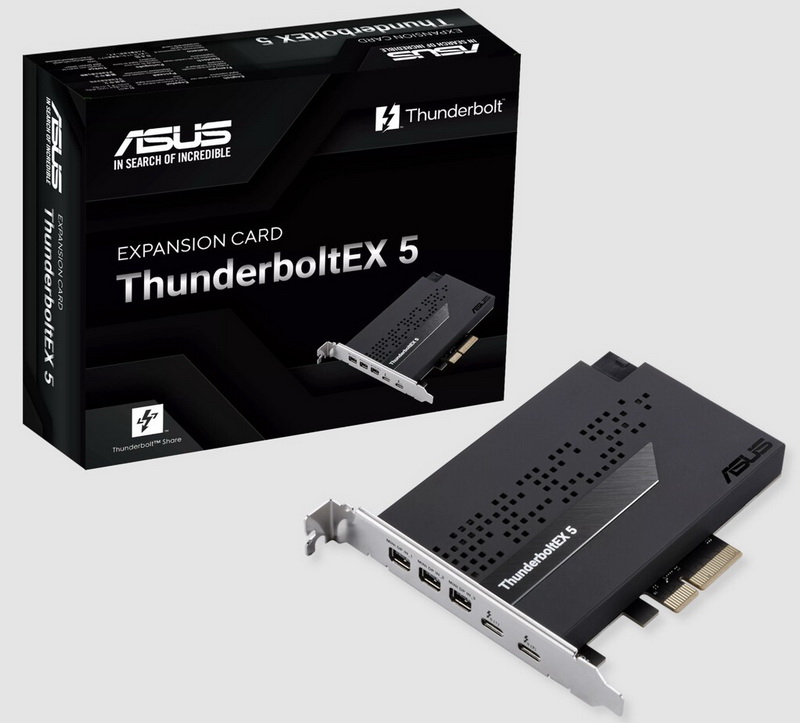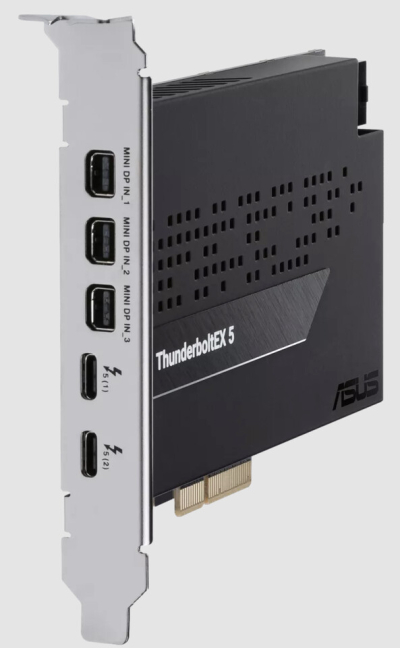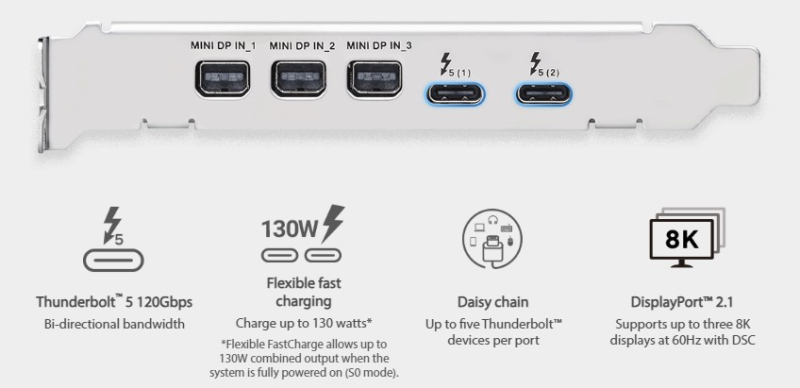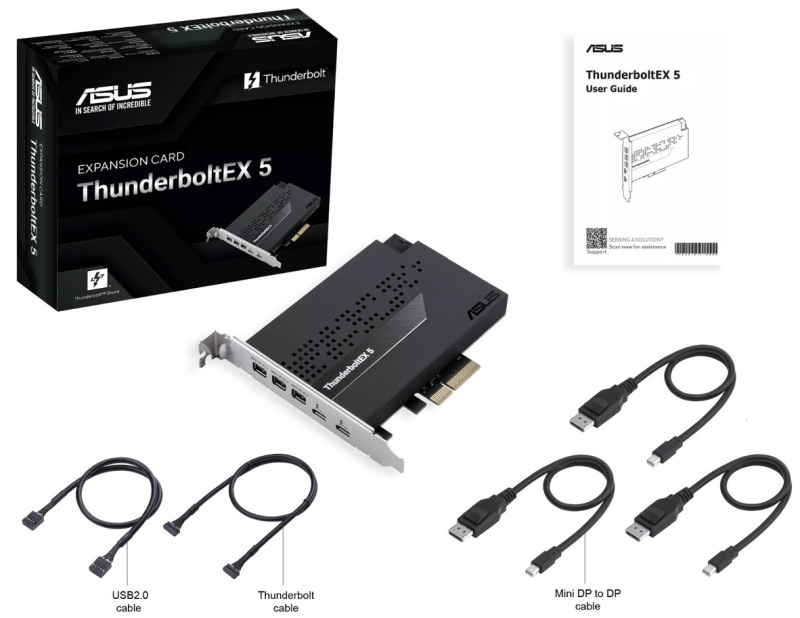Following Gigabyte, Asus also introduced an expansion card that allows you to turn a PCIe 4.0 x4 slot into two modern Thunderbolt 5 connectors, as well as three mini-DisplayPort. The new product is called simply – Asus ThunderboltEX 5.

Image source: ASUS
The key difference between the Gigabyte and Asus solutions is that the Asus card only has one 6-pin power connector instead of two. Asus still claims support for Power Delivery 3.1 (called Flexible FastCharge) for delivering up to 130W of power to an external device over Thunderbolt 5. However, one of the two Thunderbolt 5 (USB-C) ports is limited to only 96W. . You can charge, for example, a MacBook Pro at full speed, but some other laptop models require more powerful charging. The second port can transmit up to 34 W of power – enough for most smartphones. It is noteworthy that the predecessor ThunderboltEX 4 supported 100 W per connector.

Asus also included one Thunderbolt 5 terminal block with support for GPIO, SPI I2C, UART interfaces, as well as one USB 2.0 terminal block. The Asus ThunderboltEX 5 uses the same Intel JHL9580 controller as Gigabyte’s PCIe 4.0 x4 Thunderbolts 5 expansion card.

Asus ThunderboltEX 5 supports connection to up to three DisplayPort 2.1 displays with 8K resolution and 60 Hz refresh rate. However, in this case, DSC support is required. In addition to two USB-C (each supports pass-through connection of up to 5 devices), the card is equipped with three mini-DisplayPort connectors and comes with three adapter cables from mini-DisplayPort to regular DisplayPort.

The new product supports Windows 11. There is no information about support for Windows 10 and Linux.